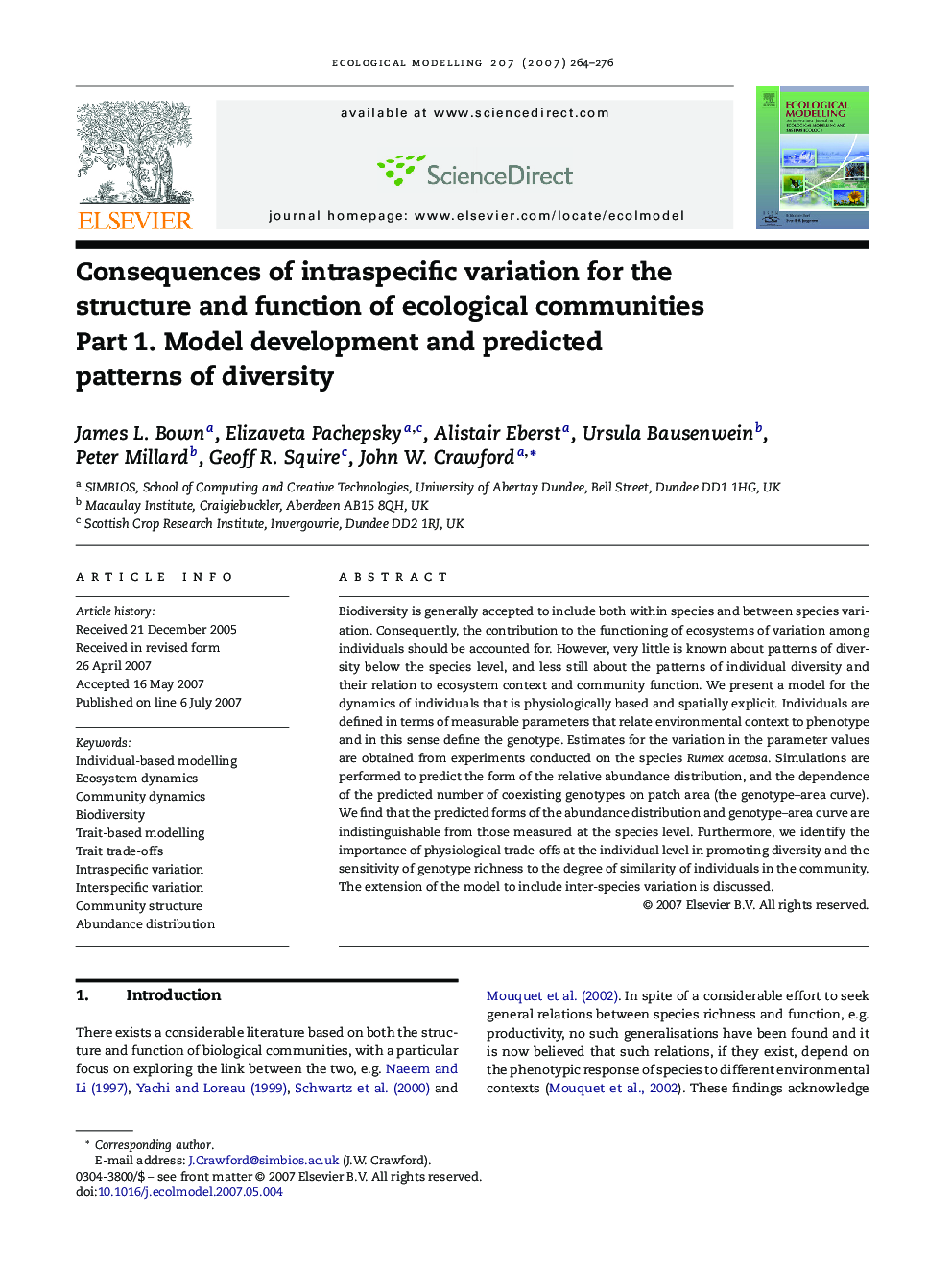| Article ID | Journal | Published Year | Pages | File Type |
|---|---|---|---|---|
| 4378468 | Ecological Modelling | 2007 | 13 Pages |
Abstract
Biodiversity is generally accepted to include both within species and between species variation. Consequently, the contribution to the functioning of ecosystems of variation among individuals should be accounted for. However, very little is known about patterns of diversity below the species level, and less still about the patterns of individual diversity and their relation to ecosystem context and community function. We present a model for the dynamics of individuals that is physiologically based and spatially explicit. Individuals are defined in terms of measurable parameters that relate environmental context to phenotype and in this sense define the genotype. Estimates for the variation in the parameter values are obtained from experiments conducted on the species Rumex acetosa. Simulations are performed to predict the form of the relative abundance distribution, and the dependence of the predicted number of coexisting genotypes on patch area (the genotype-area curve). We find that the predicted forms of the abundance distribution and genotype-area curve are indistinguishable from those measured at the species level. Furthermore, we identify the importance of physiological trade-offs at the individual level in promoting diversity and the sensitivity of genotype richness to the degree of similarity of individuals in the community. The extension of the model to include inter-species variation is discussed.
Keywords
Related Topics
Life Sciences
Agricultural and Biological Sciences
Ecology, Evolution, Behavior and Systematics
Authors
James L. Bown, Elizaveta Pachepsky, Alistair Eberst, Ursula Bausenwein, Peter Millard, Geoff R. Squire, John W. Crawford,
